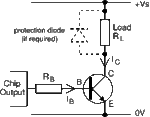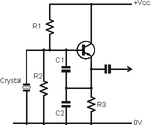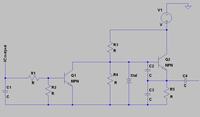hayowazzup
Advanced Member level 4
Hi, I'm trying to understand how transistor switch works on an oscillator,
If a transistor acts as a switch, like in the diagram

And replace RL with the oscillator ,
,
so now the collector terminal from the switch is instead connected to the base terminal of the transistor in the oscillator.
When output from the chip is 1 (ON), the transistor switch is saturated. Does the transistor switch draws most of the current from oscillator to the transistor(switch)'s emitter? which mean the oscillator won't have power to amplify. so it's considered Off.
in contrast, when the IC output is 0 (OFF) , the transistor switch is in cutoff region, there will be no current extracted from the power supply to the switch's emitter, so oscillator will have power to amplify and is considered ON.
If a transistor acts as a switch, like in the diagram

And replace RL with the oscillator
 ,
, so now the collector terminal from the switch is instead connected to the base terminal of the transistor in the oscillator.
When output from the chip is 1 (ON), the transistor switch is saturated. Does the transistor switch draws most of the current from oscillator to the transistor(switch)'s emitter? which mean the oscillator won't have power to amplify. so it's considered Off.
in contrast, when the IC output is 0 (OFF) , the transistor switch is in cutoff region, there will be no current extracted from the power supply to the switch's emitter, so oscillator will have power to amplify and is considered ON.
Last edited:
